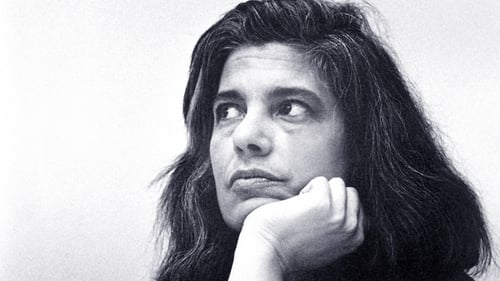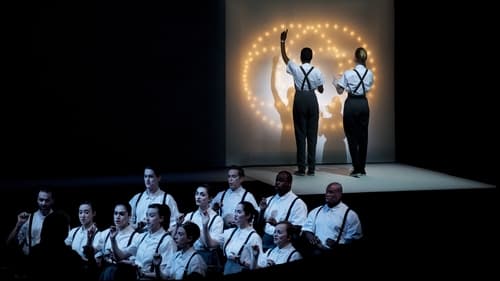Lucinda Childs
出生 : 1940-06-26, New York, New York, U.S.A.
略歴
Lucinda Childs is an American postmodern dancer/choreographer and actress. Her compositions are known for their minimalistic movements yet complex transitions.

Director
Akhnaten is set in Ancient Egypt, and based on the accession to the throne of the pharaoh Amenhotep IV – thought to have been around 1351BC – on his religious convictions, and the consequences of his actions. Presented as a combination of song, dance and music, the opera has a libretto by Philip Glass, Shalom Goldmann, Robert Israël and Richard Ridell, with the text drawing on ancient hymns, prayers and inscriptions, sung in their original Egyptian, Hebrew and Akkadian form. Produced by the Opéra de Nice Côte d’Azur as part of the Festival MANCA.

Stage Director
Akhnaten is set in Ancient Egypt, and based on the accession to the throne of the pharaoh Amenhotep IV – thought to have been around 1351BC – on his religious convictions, and the consequences of his actions. Presented as a combination of song, dance and music, the opera has a libretto by Philip Glass, Shalom Goldmann, Robert Israël and Richard Ridell, with the text drawing on ancient hymns, prayers and inscriptions, sung in their original Egyptian, Hebrew and Akkadian form. Produced by the Opéra de Nice Côte d’Azur as part of the Festival MANCA.

Choreographer
Akhnaten is set in Ancient Egypt, and based on the accession to the throne of the pharaoh Amenhotep IV – thought to have been around 1351BC – on his religious convictions, and the consequences of his actions. Presented as a combination of song, dance and music, the opera has a libretto by Philip Glass, Shalom Goldmann, Robert Israël and Richard Ridell, with the text drawing on ancient hymns, prayers and inscriptions, sung in their original Egyptian, Hebrew and Akkadian form. Produced by the Opéra de Nice Côte d’Azur as part of the Festival MANCA.

Woman
Adam’s Passion is the moving first collaboration between two “masters of slow motion who harmonize perfectly with each other” (Frankfurter Allgemeine Zeitung). In the spectacular setting of a former submarine factory, American director and universal artist Robert Wilson creates a poetic visual world in which the mystical musical language of the Estonian composer Arvo Pärt can cast its meditative spell. Three of Pärt’s major works – Adam’s Lament, Tabula rasa, and Miserere, as well as Sequentia, a new work composed especially for this production – are brought together here using light, space, and movement to create a tightly-woven Gesamtkunstwerk in which the artistic visions of these two great artists mirror each other.

Director
Performed at Theatre de la Ville in Paris and choreographed by Lucinda Childs. Music composed by Philip Glass.

Herself
An intimate study of one of the most influential and provocative thinkers of the 20th century tracking feminist icon Susan Sontag’s seminal, life-changing moments through archival materials, accounts from friends, family, colleagues, and lovers, as well as her own words, as read by Patricia Clarkson.

Choreographer
This seminal work of avant-garde opera from composer Philip Glass and director Robert Wilson arrives full-circle, coming to France, the site of its 1976 Avignon Festival world premiere, at the tail end of this 2014 revival tour for a landmark Theâtre du Châtelet production and a first ever filming by award-winning arts filmmaker Don Kent. Eschewing conventional narrative, the opera revolves loosely around pacifist Einstein’s relationship to the creation of the atomic bomb.

Choreographer
A documentary about the American postmodern dancer and choreographer Lucinda Childs. For Dance, a choreography from '79 set to the music of Philip Glass in film/decor of Sol Lewitt, Lucinda received a Guggenheim Fellowship. This masterpiece is the leitmotiv in this documentary. We see Lucinda in NY where she re-stages Dance during the Lincoln Center Out of Doors 2010. We also follow her in Arnhem during the preparations of the piece at Introdans, where it will premiere as a part of ”Sterren en Strepen” (Stars and Stripes). For this show Introdans united the king and queen of modern dance, Hans van Manen and Lucinda Childs, in order to show their pieces together. We will also be speaking to prominent figures from the dance scene about her influence on Dutch modern dance.

Self
A documentary about the American postmodern dancer and choreographer Lucinda Childs. For Dance, a choreography from '79 set to the music of Philip Glass in film/decor of Sol Lewitt, Lucinda received a Guggenheim Fellowship. This masterpiece is the leitmotiv in this documentary. We see Lucinda in NY where she re-stages Dance during the Lincoln Center Out of Doors 2010. We also follow her in Arnhem during the preparations of the piece at Introdans, where it will premiere as a part of ”Sterren en Strepen” (Stars and Stripes). For this show Introdans united the king and queen of modern dance, Hans van Manen and Lucinda Childs, in order to show their pieces together. We will also be speaking to prominent figures from the dance scene about her influence on Dutch modern dance.

Choreographer
The European premiere of the opera by the contemporary American composer John Adams, with libretto by Peter Sellars, in a co-production of the San Francisco Opera (where the work premiered), the Lyric Opera of Chicago, and De Nederlandse Opera. The plot focuses on the great stress and anxiety experienced by those at Los Alamos while the test of the first atomic bomb (the "Trinity" test) was being prepared.

Choreographer
Richard Strauss's opera, from the Royal Opera House, Covent Garden.

choreographer (herself)
The creative processes of avant-garde composer Philip Glass and progressive director/designer Robert Wilson are examined in this film. It documents their collaboration on this tradition breaking opera.

Also known as “Letter from Venice,” Susan Sontag’s fourth and final film tells of a relationship that is fragmenting as the partners tour the decaying ruins of a hallucinatory Venice.

Made in 1980, this film explores the contemporary dance scene through the work of seven New York-based choreographers. They discuss the nature of dance and the evolution of their own work. Filmed at rehearsals, performances, and during interviews, the film is a unique primary source. The artistic roots of these seven artists can be found in Martha Graham's concern with modern life as a subject for dance and in Merce Cunningham's emphasis on the nature of movement. In the 1960s, the interaction of art forms generated choreographic innovations. Especially influential was John Cage, whose radical ideas served as a point of departure for much of the new choreography. Each of the choreographers in Making Dances draws inspiration from the Graham/Cunningham tradition, yet each makes a highly distinctive statement. Structure, movement in non-fictive time and space, and the nature of movement itself are recurring themes.

An extraordinary video sketchbook; A highly original, visually dramatic and frequently humorous collection of one hundred abbreviated "episodes" produced for television. Unfolding as a series of thirty-second vignettes, this enigmatic essay in style is characterized by a deadpan theatricality, symbolist imagery, surrealist juxtapositions and repetition of key visual motifs.

Choreographer
Choreographed by american choreographer, Lucinda Childs, the film explores complex patterns that are created with the simple action of walking

In this "fourteen-part drill for the camera," Frampton created a portrait gallery of his art-world friends engaging in a variety of ordinary activities.

Self
The films were made between 1964 and 1966 at Warhol's Factory studio in New York City. Subjects were captured in stark relief by a strong key light, and filmed by Warhol with his stationary 16mm Bolex camera on silent, black and white, 100-foot rolls of film at 24 frames per second. The resulting two-and-a-half-minute film reels were then screened in 'slow motion' at 16 frames per second.

Shoulder
According to the first volume of the Andy Warhol film cat. rais., the film was probably shot on the same day as Jill Johnston Dancing. In the Stephen Koch filmography, Shoulder is listed as: "16mm, 4 minutes, B/W, silent, 16 fps. Filmed summer, 1964. Lucinda Childs' shoulder."
![Screen Test [ST52]: Lucinda Childs](/assets/images/no-backdrop.png)
Herself
Lucinda Childs, framed in tight close-up, holds completely still and fixes the camera with a determined stare, frowning slightly.

Herself
One of two(?) 1964 screen tests of Childs. Runs 4 minutes, 30 seconds in length.


















![Screen Test [ST52]: Lucinda Childs](/assets/images/no-backdrop.png)